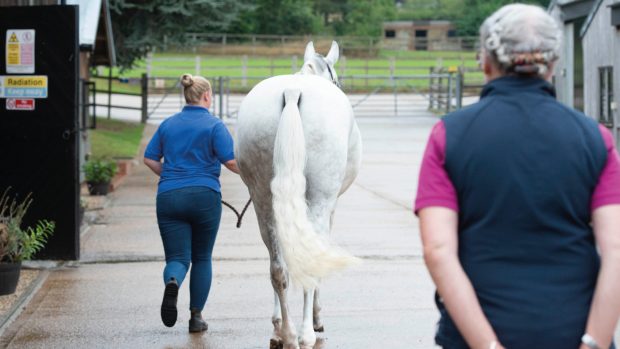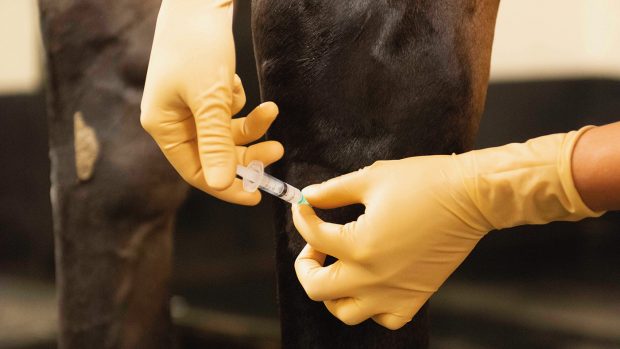Bone cysts usually cause lameness, though occasionally one may be identified on an X-ray of a sound horse. In such cases, it is hard to predict whether lameness will occur in the future, but some horses have bone cysts without incurring any problems.
In the vast majority of cases, the first sign of any problem is lameness. The severity is fairly variable, although most horses will be obviously lame at the trot. Frequently, the level of lameness will fluctuate, even while the horse is being trotted up.
There is often increased fluid in the joint, which your vet will recognise as a joint swelling, and performing flexion tests on the limb may exacerbate the lameness. It is normal practice to carry out a nerve block with local anaesthetic into the joint to confirm the site of lameness, and, in most cases, a significant improvement will be seen.
The definitive diagnosis of a bone cyst is most commonly achieved by X-raying the joint and identifying the characteristic appearance of a bone cyst as a “black hole” in the end of the bone.
Sometimes, X-rays may not reveal everything that is going on in the joint, and other techniques, such as bone scans or ultrasound, may be employed. It is common practice to X-ray both the lame joint and the similar joint on the other leg(s), because some horses may have bone cysts in both limbs, even if only one is currently causing a problem.
Treatment
Treatment initially consists of box-rest to see if the problem will settle down over several months. This can sometimes be successful, though in the majority of horses the lameness persists despite long periods of rest. Many require surgical intervention to treat the bone cyst in order to have some hope of returning to work.
These days surgery is almost always carried out using arthroscopic “keyhole” techniques. This approach has the advantage that it is possible to inspect the whole joint and identify other damage within it, such as injuries to the cartilage and ligaments.
Surgical treatment can take a variety of forms. Traditionally, all the abnormal cartilage and the lining of the cyst are removed. However, in recent years, surgeons have tended to be much more conservative, frequently removing only small amounts of cartilage and then injecting a powerful anti-inflammatory drug into the cyst at the end of the surgery.
More techniques are being researched, such as implantation of stem cells into the cyst, although such approaches are still not commonly employed.
Prognosis
The outcome of horses treated for bone cysts is highly variable. A minority of cases treated by rest alone will return to full soundness, although there has not yet been a systematic study to identify the exact success of this approach.
A recent study by the University of Liverpool, involving a number of large equine hospitals in the UK and USA, has identified how successful surgery is in treating this condition. In particular, the study identified that young horses (aged three or less) had a considerably better outcome than older animals.
In all, 64% of surgically treated youngsters returned to soundness, in comparison with only 35% of older horses. The difference in outcome may reflect the inherent ability of youngsters to heal better. More likely, it reflects the different causes of bone cysts in young and old horses, with younger animals suffering from the developmental form in which the damage to the joint and bone may be localised to the site of the bone cyst.
In older animals, where there is a traumatic cause to the disease, there is frequently other damage in the joint, which may negatively affect the outcome in many cases. The results of treatment are not very good in older horses, with only one in three affected animals returning to work.
SUBSCRIBE TO HORSE & HOUND AND SAVE Enjoy all the latest equestrian news and competition reports delivered straight to your door every week. To subscribe for just £1.43 a copy click here >>
|



